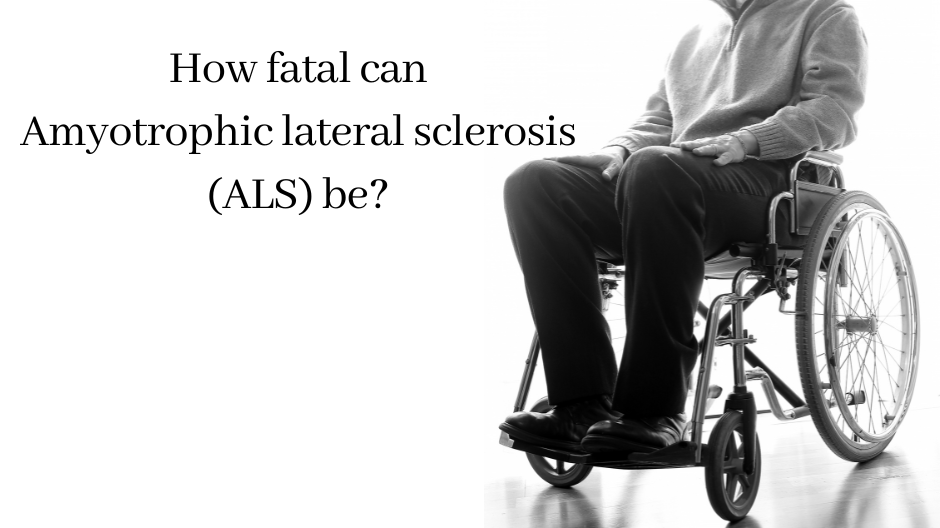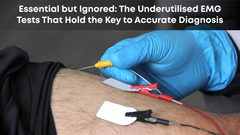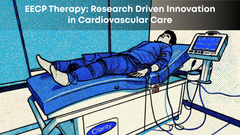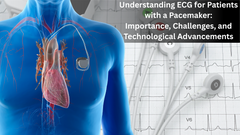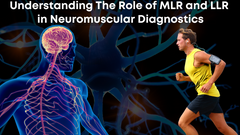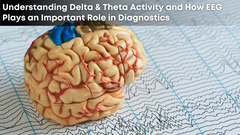How fatal can Amyotrophic lateral sclerosis (ALS) be?
What is Amyotrophic lateral sclerosis (ALS)
Amyotrophic lateral sclerosis (ALS), also known as Lou Gehrig's disease, is a progressive neurodegenerative disease that affects the nerve cells responsible for controlling voluntary muscle movements. The disease typically leads to muscle weakness, atrophy, and eventually paralysis, as well as difficulty with speech, swallowing, and breathing.
What causes ALS?
The exact cause of ALS is not fully understood, but it is believed to be the result of a combination of genetic and environmental factors. Causal factors include genetic mutations inherited from a parent and environmental factors including exposure to toxins or chemicals, head injuries, and military service. However, the exact relationship between these factors and the development of ALS is not well understood.
What are the symptoms of ALS?
The symptoms of ALS (amyotrophic lateral sclerosis) typically start gradually and may be difficult to notice at first. However, as the disease progresses, the symptoms become more pronounced and can significantly impact a person's ability to move, speak, swallow, and breathe.
Some of the common early symptoms of ALS include:
- > Muscle weakness or stiffness
- > Difficulty with fine motor skills such as writing, buttoning clothes or turning a key in a lock
- > Slurred speech or difficulty with swallowing
- > Muscle cramps or twitching
- > Unintentional weight loss
- > Fatigue or weakness
As the disease progresses, the symptoms may include:
- > Difficulty walking or standing
- > Trouble breathing or shortness of breath
- > Paralysis or weakness in the limbs, which may eventually spread to the muscles used for breathing and swallowing
- > Difficulty with speech, which may become slurred or even lost entirely
- > Emotional changes, such as depression or apathy
It's important to note that ALS affects each person differently, and the symptoms can vary widely in terms of their severity, progression, and impact on daily life. If you or someone you know is experiencing any of these symptoms, it's essential to seek medical attention as soon as possible.
What are the effects of ALS on daily life?
ALS (amyotrophic lateral sclerosis) is a progressive disease affecting the brain and spinal cord nerve cells that control muscle movement. The symptoms can significantly impact a person's ability to perform daily activities.
Here are some of the ways that ALS can affect daily life:
- > Mobility: ALS can cause muscle weakness and atrophy, making it difficult to walk, climb stairs, or even stand up from a seated position. In some cases, a wheelchair or other mobility aids may be necessary.
- > Communication: As the disease progresses, ALS can affect the muscles used for speech, making it challenging to communicate effectively. Some people with ALS may eventually require a communication device or other assistive technology to help them communicate.
- > Eating and drinking: ALS can make swallowing difficult, leading to choking or aspirating food or liquids. Sometimes, a feeding tube may be necessary to ensure adequate nutrition.
- > Breathing: ALS can affect the muscles used for breathing, making breathing difficult. Some ALS patients may require a ventilator or other breathing support as the disease progresses.
- > Daily tasks: As muscle weakness progresses, it can become difficult to perform simple tasks such as buttoning clothes, brushing teeth, or even turning a key in a lock. Occupational therapy can help find new ways to perform daily tasks and maintain independence for as long as possible.
Celebrities with Amyotrophic lateral sclerosis (ALS)
Several celebrities have been diagnosed with ALS (amyotrophic lateral sclerosis). Here are some of the most notable ones:
- > Stephen Hawking - A renowned physicist, cosmologist, and author, Hawking was diagnosed with ALS in 1963 at the age of 21. Despite being given only a few years to live, he went on to make groundbreaking contributions to the field of physics and became a beloved public figure.
- > Lou Gehrig - Nicknamed "The Iron Horse," Gehrig was a legendary New York Yankees baseball player diagnosed with ALS in 1939 at the age of 36. The disease forced him to retire from baseball, and he passed away just two years later.
- > Jason Becker - A musician and composer, Becker was diagnosed with ALS in 1989 at the age of 20. Despite losing his ability to play guitar and speak, he has continued to compose music using eye movements to communicate and has become a source of inspiration for many.
- > Dwight Clark - A former NFL wide receiver, Clark was diagnosed with ALS in 2017 and passed away in 2018 at the age of 61. He used his platform to raise awareness about the disease and advocate for research and treatment options.
- > Tim Green - A former NFL player, Green was diagnosed with ALS in 2018 at the age of 54. He has become an advocate for ALS research and has written several books about his experience with the disease.
These are just a few celebrities who have been affected by ALS. Their stories have helped to raise awareness about the disease and the urgent need for effective treatments and a cure.
How is ALS diagnosed?
The diagnosis of ALS (amyotrophic lateral sclerosis) can be challenging because no single test can definitively diagnose the disease. Instead, doctors use a combination of tests and assessments to evaluate a patient's symptoms and rule out other possible causes.
Here are some of the typical steps involved in diagnosing ALS:
- > Medical history and physical exam: The doctor will ask about the patient's medical history and symptoms and perform a physical exam to assess muscle strength, reflexes, and other neurological signs.
- > Electromyography (EMG) and nerve conduction studies (NCS): These tests are used to evaluate the electrical activity of the muscles and nerves and can help detect abnormalities consistent with ALS.
- > Blood and urine tests: These tests can help rule out other conditions that can mimic ALS, such as Lyme disease or vitamin deficiencies.
- > Magnetic resonance imaging (MRI): An MRI to evaluate the brain and spinal cord can rule out other possible causes of the patient's symptoms.
- > Muscle biopsy: In some cases, a muscle biopsy may be necessary to rule out other muscle disorders.
- > Consultation with a neurologist: A neurologist with expertise in ALS can help make the diagnosis and recommend appropriate treatment options.
It's important to note that ALS can be difficult to diagnose, and it may take time and multiple tests to confirm the diagnosis. Early diagnosis is vital for starting treatment and managing the disease, so it's essential to seek medical attention as soon as possible if you are experiencing symptoms of ALS.
Have Amyotrophic lateral sclerosis (ALS) cases increased in number?
There is currently no clear evidence that the number of Amyotrophic lateral sclerosis (ALS) cases has increased in recent years. However, some factors may contribute to the perception that the incidence of the disease is rising.
One possible factor is increased awareness and improved diagnosis of the disease. As medical knowledge and diagnostic tools have improved, doctors may be better able to recognize and diagnose cases of ALS. This can make it appear as though the incidence of the disease is increasing, even though it may simply be a matter of better detection.
Can ALS be prevented?
Unfortunately, there is no known way to prevent Amyotrophic lateral sclerosis (ALS). The cause of the disease is not fully understood, and no known lifestyle changes or interventions can prevent or reduce the risk of developing ALS.
How can Clarity Medical's EMG devices help in the diagnosis of ALS?
Clarity Medical designed their EMG/NCV/EP systems for rapid and accurate nerve conduction studies and evoked potentials. These modular, world-class EMG devices support up to 8 channels and can quickly run up to 17 diagnostic tests. Fitted with extremely low-noise amplifiers, these devices are the perfect addition to any neuro-diagnostic clinic. With a range of devices ranging from the highly portable EasyTrace to the full-sized EMG-Octopus, Clarity Medical has the suitable device for your clinic's diagnostic needs.
Conclusion
The diagnosis of ALS is as challenging as its management. Companies such as ensure that their EMG/NCV/EP devices, pulse oximeters, remote patient monitors and other groundbreaking telemedicine solutions can help medical institutions in India always maintain world-class patient care. A true-blue Make in India story, Clarity Medical is committed to providing the best cost-quality ratio for all its products and is committed to helping the medical world in the early diagnosis of diseases such as ALS.

